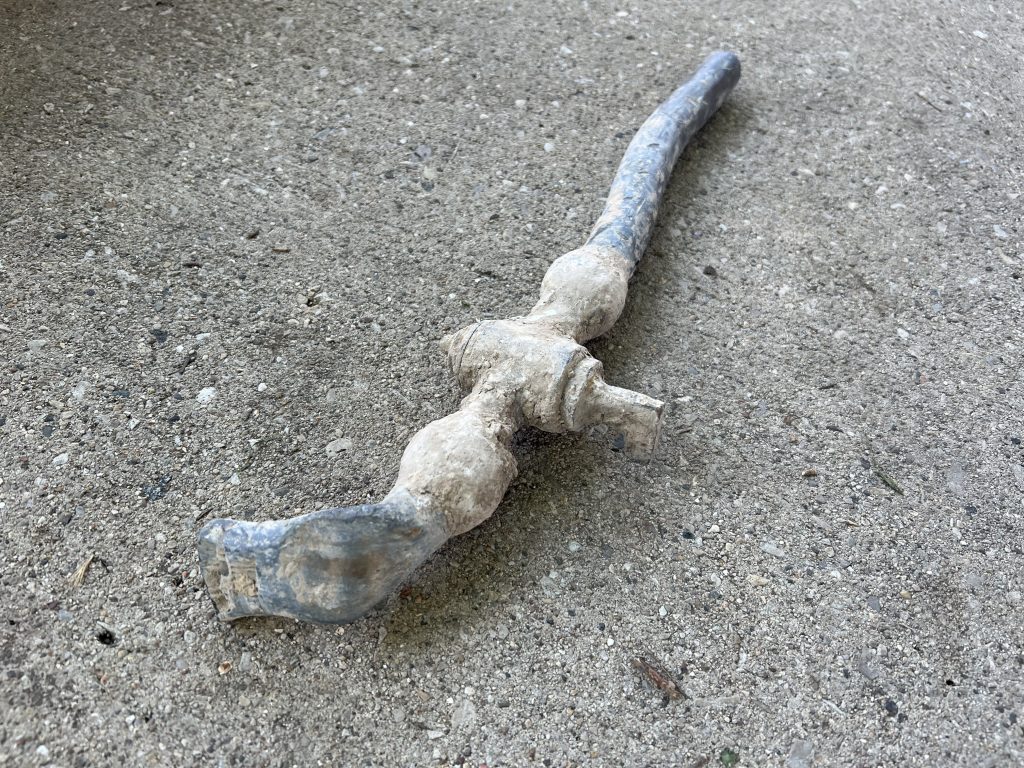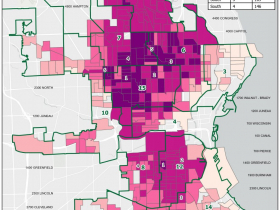City Unveils Latest Lead Lateral Plan
With added federal funding, Water Works can now replace more laterals each year, but which ones?
Thanks to the Bipartisan Infrastructure Law, Milwaukee Water Works (MWW) must grapple with an unusual problem.
The city-owned utility expects to receive more funding to replace lead water service lines (laterals) than it has laterals needing immediate replacement under its current approach.
As a result, city officials must now choose which additional laterals should be prioritized for replacement while navigating a complicated web of legal restrictions and acknowledging the fact that the city is still likely decades away from replacing the estimated 66,600 lead service lines still remaining that connect businesses and homes to the city’s water supply.
MWW is planning to replace 1,200 service lines in 2023, which in itself would be a record. But it expects, with the funding surge, it could replace 1,700 in 2024 and 2,200 in 2025.
A new proposal attempts to weigh various factors, including socioeconomic information and lead poisoning data, to determine which additional laterals should be replaced first. It identifies 10 areas of initial focus, six largely in a row along W. Locust St. in the northcentral area of the city, and four areas on the city’s near South Side, three along W. Greenfield Ave. and one near W. Lincoln Ave. and S. 6th St.
Under current city policy, lead services connecting childcare centers to the water supply get replaced for free. Lead service lines that break are replaced with a maximum cost of $1,592 to the property owner. Similarly, if the road in front of a property is reconstructed or a water main is replaced, the lateral gets replaced under the $1,592 cost-sharing formula. That list would be exhausted with the 1,200 planned 2023 replacements.
“The Bipartisan Infrastructure Law has presented a first-ever opportunity for funding provided specifically for lead service line replacement and we need to take advantage of that funding to the greatest extent possible,” MWW Superintendent Patrick Pauly, in briefing a council committee in February on the utility’s thinking about what to do next. Now it’s begun sharing the plan.
The Proposal
The utility’s draft plan, first shared in a town hall meeting last week, evaluates areas down to U.S. Census Bureau-defined census block groups (which have a population of between 600 to 3,000). Because it is substantially cheaper to replace a cluster of service lines than those scattered across the city, MWW is pursuing a strategy of bulk replacement.
MWW developed its Equity Prioritization Plan by weighting three factors, a UW-Madison-developed Area Deprivation Index of socioeconomic factors (70%), incidences of children testing positive for blood lead levels of at least 5 micrograms per deciliter (25%) and lead service line density (5%).
The plan isn’t strictly mathematical, it also contains a political and equity consideration. All census block groups are weighted using the model, but then the annual replacements would be scheduled to occur with 65% on the North Side and 35% on the South Side.
A document from MWW says that split is being made to ensure work is done in both Black and Latino neighborhoods, with the predominately Black North Side containing 62% of lead laterals, 65% of the highest-ranking census blocks and 63% of the census blocks with children testing positive for elevated blood lead levels.
It identified the 10 target census block groups, then applied the north-south split to yield the initial replacement targets.
Property owners would not get a free lateral replacement as part of the plan, but would see a discount on the cost-sharing model. Instead of the $1,592 cost (one-third of the cost to replace the private side of the lateral), property owners would be charged $1,200 and allowed to spread the cost over 10 years.
Pauly previously told the Public Works Committee that he expected to unveil a final plan in September. The town hall meeting was sponsored by council members Khalif Rainey, Russell W. Stamper, II, Jonathan Brostoff and Robert Bauman as well as the Coalition on Lead Emergency.
MWW, in a planning document, said it anticipates issuing a request for proposals for an owner’s representative to administer the program.
The utility reports there is currently at least $42 million in federal and state funds for the work through 2024, but the utility is still awaiting the Wisconsin Department of Natural Resources to award funds from the 2021 federal funding package. Pauly, in February, said the amount of federal funding available was expected to grow because not every state would need its full allocation.
Vice President Kamala Harris and infrastructure czar Mitch Landrieu visited Milwaukee in 2022 to tout aspects of the $1.2 trillion infrastructure law. Mayor Cavalier Johnson spoke on a panel at the White House Summit on Accelerating Lead Pipe Replacement in January. As a result of the bill’s passage, Department of Public Works and MWW leader Karen Dettmer left her city job to take a position with the EPA working on water infrastructure.
MWW replaced 991 service lines in 2022, 558 because of a leak or failure, 77 at a childcare facility or school, 152 because of water main replacements, 174 because of other infrastructure projects, and 30 that were owner-initiated. Pauly, in 2022, warned that the utility would not meet its goal of 1,100 replacements because of post-pandemic shortages of curb stops and corporation stops that connect the service lines. It has since acquired sufficient stops to meet its 2023 goal.
The city-owned utility, which sells water to 16 municipalities, is limited on where it can derive funding to replace laterals due to state utility regulations. It cannot use funds from customers to replace laterals at its own discretion. Further complicating the matter, because the service line is partially privately owned, the city cannot force replacement in many cases.
Any house built before 1978, which accounts for most of the houses in the city, is likely to include lead paint. The last lead service line in the city was believed to be installed in 1962. Interior plumbing, beyond the service line, is also likely to include lead. City officials have repeatedly insisted that lead paint is the biggest danger, but that no amount of lead is safe. Individuals concerned about lead poisoning can learn more about lead-safe filters and testing on the MWW website. MWW also maintains a database of properties with known lead service lines.
Images
UPDATE: An earlier version of the article said the Common Council would need to approve the plan. MWW intends to execute the plan as part of its already established authority to proceed with “planned projects.”
If you think stories like this are important, become a member of Urban Milwaukee and help support real, independent journalism. Plus you get some cool added benefits.
More about the Lead Crisis
- MPS Plans Lead Remediation at 40 Schools This Summer - Evan Casey - Jun 27th, 2025
- Baldwin, Reed Demand Written Answers from RFK, Jr. on Firings of Childhood Lead Poisoning Experts at CDC - U.S. Sen. Tammy Baldwin - Jun 11th, 2025
- MPS’s LaFollette School Cleared of Lead Risks After Stabilization Work - Milwaukee Public Schools - Jun 11th, 2025
- Sen. Baldwin Hears From Parents About MPS Lead Crisis, Chides RFK Jr. - Evan Casey - Jun 9th, 2025
- Reps. Margaret Arney and Darrin Madison Urge Joint Finance Committee to Reinstate Essential Lead Abatement Funding - State Rep. Margaret Arney - Jun 5th, 2025
- Gov. Evers, DHS Continue Administration’s Efforts to Combat Lead Poisoning Statewide with Permanent Rule - Gov. Tony Evers - May 27th, 2025
- RFK Jr. Claims ‘Team’ Is In Milwaukee Helping With Lead Crisis, Health Department Can’t Find Them - Nick Rommel - May 22nd, 2025
- MPS Announces Starms Early Childhood Center Is Cleared of Lead Dangers - Milwaukee Public Schools - May 21st, 2025
- Milwaukee Has Removed 10,000 Lead Laterals - Graham Kilmer - May 13th, 2025
- New MPS Superintendent Cutting Central Office Jobs - Corrinne Hess - May 8th, 2025
Read more about Lead Crisis here
Political Contributions Tracker
Displaying political contributions between people mentioned in this story. Learn more.
- February 20, 2016 - Cavalier Johnson received $250 from Robert Bauman

























